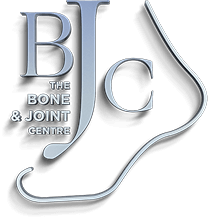What is a Bunion, and What is Surgery For?
A bunion is a bony growth that develops at the metatarsophalangeal (MTP) joint, which is located at the base of the big toe. It forms as a result of pressure being constantly applied to the MTP joint, causing it to become displaced and stick out, and the big toe to lean against the second toe.
Foot structure problems, injuries, joint diseases, and wearing ill-fitting shoes can increase one’s risk of developing bunions. Contrary to popular belief, bunions are a type of foot deformity that can only be fully fixed through bunion surgery treatment.
While symptoms can be managed using pain medications, injections, bunion pads, shoe inserts, comfortable footwear and physiotherapy, bunion surgery in Singapore is recommended to permanently correct bunions and alleviate painful symptoms.
Singapore bunion surgery, or bunionectomy, is the procedure to remove the bunion and realign the big toe back to its original position. The exact type of surgery performed will also depend on the severity of the bunion.
Singapore bunion treatment can be performed under either local or general anaesthesia. Apart from arranging transportation home and informing the doctor beforehand of any medications being taken, the doctor may also advise a fasting period prior to the procedure.
Depending on the severity of the bunion, the surgeon may perform one of the following:
- Osteotomy – The big toe joint is cut and placed back into its original position.
- Exostectomy – The bunion is removed but no joint realignment is done.
- Arthrodesis – Metal plates, pins and screws are used to correct the joint’s alignment.
After the procedure, the foot is bandaged and the patient is taken to the recovery room for monitoring until the anaesthesia wears off. The patient is normally discharged and cleared to go home on the day itself.
Following bunion treatment in Singapore, the patient may be required to wear a cast or a surgical shoe, and use a cane or crutch for a few weeks to protect the foot. Applying ice and keeping the foot elevated are also advised to reduce swelling and discomfort. Similarly, pain can be managed using over-the-counter pain medication.
The bandage on the foot should be kept dry and clean at all times. In some cases, the bandage may be covered with plastic when taking a shower, or the patient may just be advised to have sponge baths instead.
Gentle exercises can be helpful to restore strength and movement to the joint, though more physical and strenuous activities are still discouraged for 6 to 8 weeks after the surgery. High heels may not be worn for around 6 months. The patient may also need to return to the hospital for a follow-up check-up to ensure that the wound is healing well as intended.
The Bone & Joint Centre is skilled in both traditional open and minimally invasive surgery to treat bunions. To learn more about bunion surgery or to schedule an appointment with our doctor, call us at 9898 7781 today.
Our orthopaedic specialist is widely recognised in his field to skilfully diagnose & treat your injury or condition so you can emerge stronger and safely return to the activities you enjoy.
For more information, please call 9898 7781 or click here to send us an email
We want to assure you that we remain committed to providing the high quality and compassionate care you have come to expect from us. For more assistance, please call us at 9898 7781 or fill up the form below and we will get back to you as soon as possible.

3 Mount Elizabeth, #14-15,
Singapore 228510
| Tel | : +65 6970 5905 |
| Fax | : +65 6970 5906 |
| Mobile | : +65 9898 7781 |
: hello@bjc.sg, |




